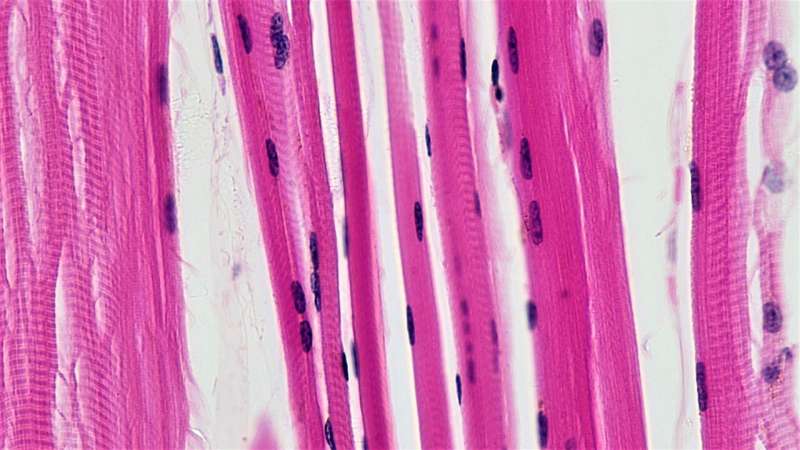
An international team, led by University of Ottawa Faculty of Medicine researchers, has published findings that could contribute to future therapeutics for muscle degeneration due to old age, and diseases such as cancer and muscular dystrophy.
In a study appearing in the Journal of Cell Biology, which publishes peer-reviewed research on cellular structure and function, the authors said their work demonstrates the importance of the enzyme GCN5 in maintaining the expression of key structural proteins in skeletal muscle. Those are the muscles attached to bone, which breathing, posture and locomotion all rely on.
“We found that if you delete GCN5 expression from muscle it will no longer be able to handle extreme physical stress,” says Dr. Keir Menzies, a molecular biologist at the Faculty of Medicine’s Biochemistry, Microbiology and Immunology department and cross-appointed as an associate professor at the Interdisciplinary School of Health Sciences.
Over the span of roughly five years, the uOttawa-led international collaboration painstakingly experimented with a muscle-specific mouse “knockout” of GCN5, a well-studied enzyme which regulates multiple cellular processes such as metabolism and inflammation. Through a series of manipulations, scientists produce lab mice in which specific genes are disrupted, or knocked out, to unveil animal models of human disease and better understand how genes work.
In this case, multiple experiments were done to examine the role the GCN5 enzyme plays in muscle fiber. What they found with this line of muscle-specific mouse knockouts was a notable decline in muscle health during physical stress, such as downhill treadmill running, a type of exercise known by athletes to cause micro-tears in muscle fibers to stimulate muscle growth. The lab animals’ muscle fibers became dramatically weaker as they scurried downhill, like those of old mice, while wild-type mice were not similarly impacted.
Dr. Menzies, the senior author of the study, says the findings are akin to what is observed in advanced aging, or myopathies and muscular dystrophy, a group of genetic diseases that result in progressive weakness and loss of muscle mass. It was supported by human data, including an observed negative correlation between muscle fiber diameter and Yin Yang 1, a highly multifunctional protein that is pivotal to a slew of cellular processes and found by the Menzies lab to be a target of GCN5.
Ultimately, the team’s research found that GCN5 boosts the expression of key structural muscle proteins, notably dystrophin, and a lack of it will reduce them.
This is significant because dystrophin is the body’s most important protein for maintaining the membrane of muscle cells, serving as a kind of anchor and cushioning shock absorber in cells of muscles. Without it, muscles are very susceptible to physical stress, and the withering of muscles can lead to crippling and deadly consequences.
“Our publication shows that if you knock out GCN5, the one major thing we see is a lack of dystrophin, without seeing any real disruption of any other mechanisms,” says Dr. Menzies. He noted that the paper also reaffirmed other research showing that GCN5 doesn’t alter the content of muscle mitochondria, the powerhouses in cells, and another major influencer of muscle health.
The research builds on data showing that dystrophin is “important for maintaining general muscle integrity and muscle health,” according to Dr. Menzies.
Source: Read Full Article